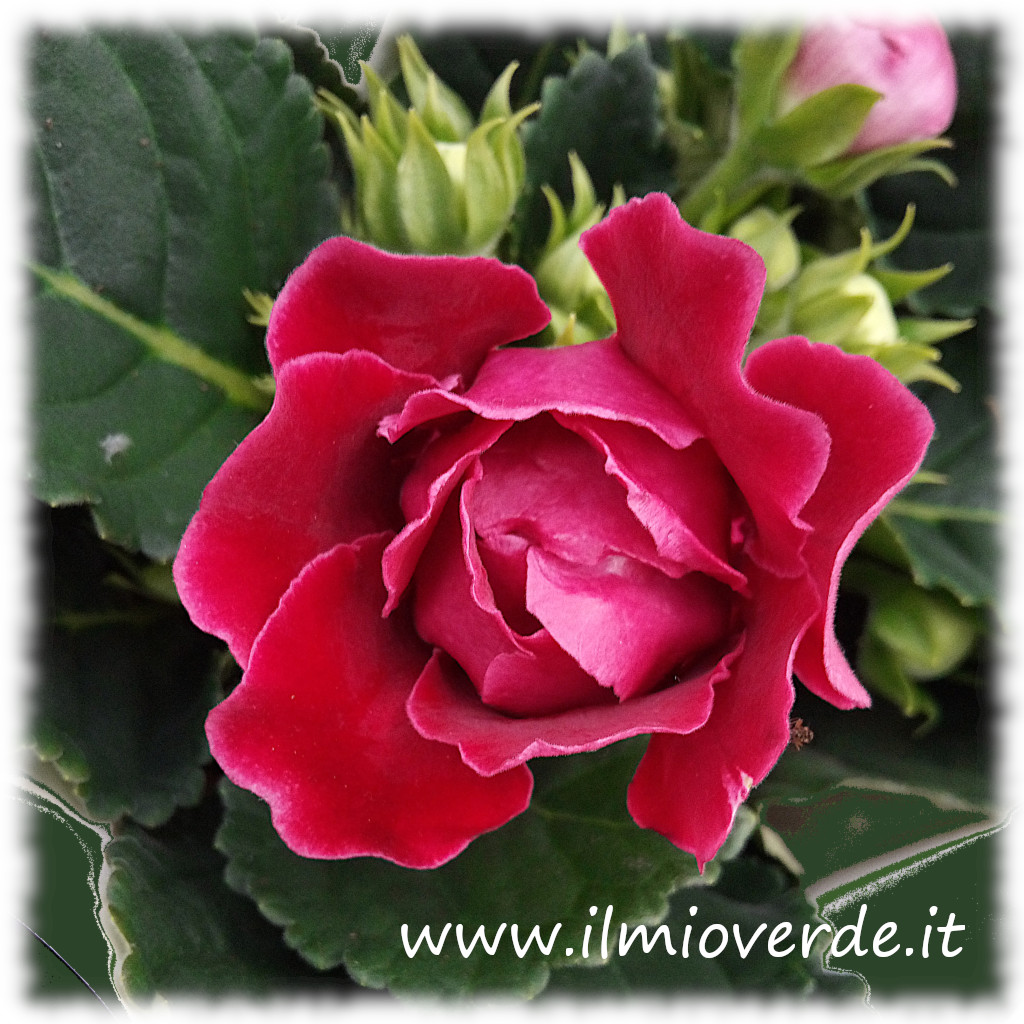Scientific Name: Sinningia speciosa
Common Name: Gloxinia
Family: Gesneriaceae
Sinningia speciosa, also known as Gloxinia, is an extraordinary plant native to the tropical forests of Brazil. With its spectacular flowers and velvety leaves, it is highly appreciated for decorating indoor spaces, particularly ideal for those seeking a plant with intense blooms and an immediate visual impact. Gloxinia is very popular as a houseplant due to its beauty and the ease with which it can be grown indoors.
Origins and history
Sinningia speciosa originates from the Brazilian mountains, where it grows naturally in cool and humid areas. The name Sinningia was given in honor of the German botanist Wilhelm Sinning, while speciosa comes from Latin, meaning “splendid,” referring to the beauty of its flowers. The variety we know as Gloxinia was selected for its striking and colorful blooms and was introduced to Europe in the 19th century.
Characteristics
- Flowers: The flowers of Sinningia speciosa are the plant’s main feature. Large, bell-shaped or tubular flowers, they come in various colors, including red, purple, blue, white, pink, and even combinations of these. Their shape and vibrancy make them a real spectacle, and they bloom primarily in spring and summer.
- Leaves: The leaves are large, velvety, and deep green. They have a soft texture to the touch, making them visually pleasing and tactile. The leaves grow along short, fleshy stems.
- Size: Sinningia speciosa is a compact plant, typically growing to 20-30 cm in height. This makes it perfect for pot cultivation, even on windowsills or tables, where it can be easily admired.
Care and Maintenance
- Light: Gloxinia prefers bright, indirect light, but not direct sunlight. Direct exposure to the sun can burn its delicate leaves, so it’s important to place it in a well-lit area but shielded from direct sun rays.
- Temperature: This plant thrives in warm environments with temperatures ranging between 18-24°C. It does not tolerate cold well, so it’s best to avoid placing it in overly cool environments. During winter, it’s advisable to protect it from drafts or temperature fluctuations.
- Watering: Sinningia speciosa requires well-draining but moist soil. It’s important to water it regularly, but avoid waterlogging, which can lead to root rot. In winter, when the plant enters a dormant phase, watering can be reduced.
- Humidity: Humidity is crucial for Gloxinia. If the air is too dry, it can be increased by spraying water on the leaves or using a humidifier.
- Fertilizing: During the growing season (spring and summer), it’s recommended to fertilize the plant with a balanced liquid fertilizer every 2-4 weeks. In winter, fertilizing should be stopped as the plant enters a rest phase.
Blooming and Dormancy
One of the most fascinating aspects of Sinningia speciosa is its ability to enter a dormant period after blooming. When the plant stops flowering, it may appear to be dying, but it is simply resting. During this time, reduce watering and allow the plant to recover. In spring, new shoots will begin to appear, and the plant will start blooming again.
Benefits and Use in the Home
Besides being visually spectacular, Sinningia speciosa is also a perfect addition for those seeking a low-maintenance houseplant. It is resilient, decorative, and blooms abundantly under ideal conditions. Its vibrant flowers are perfect for brightening up indoor spaces such as living rooms, offices, or bedrooms.
Being a flowering plant, it can also make a wonderful gift for those who love ornamental plants. Moreover, Sinningia is relatively easy to grow in a pot, so it can be easily moved to adapt to your home’s light or temperature conditions.
Sinningia speciosa is a wonderful plant, perfect for those who love having houseplants that are not only beautiful but also easy to care for. With its spectacular blooms and velvety leaves, it makes a perfect addition to any space. If you’re looking for a plant that adds color and elegance to your home, Gloxinia is an excellent choice!
Immagine di Davide Giuseppe Zannini
